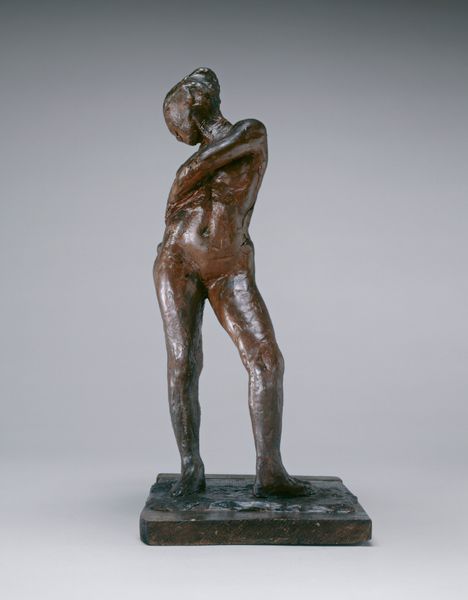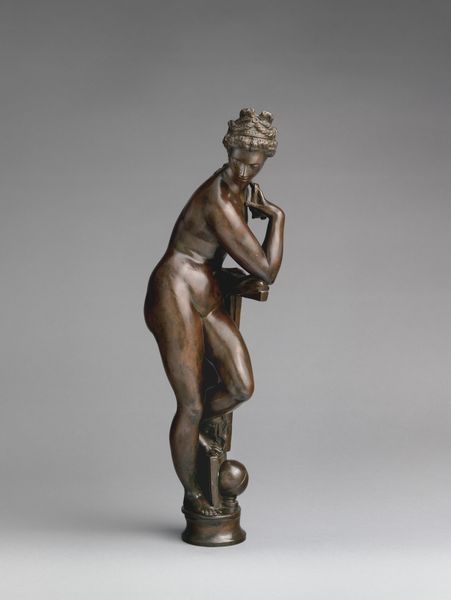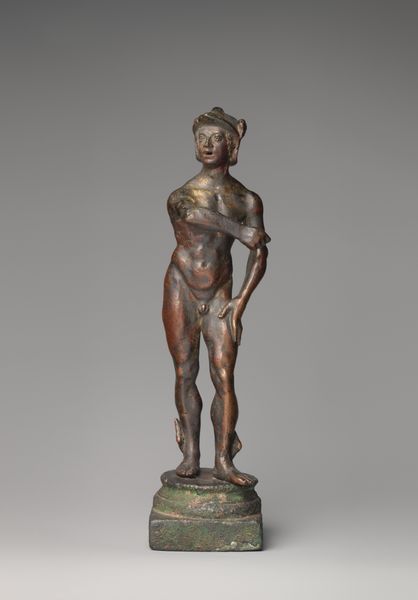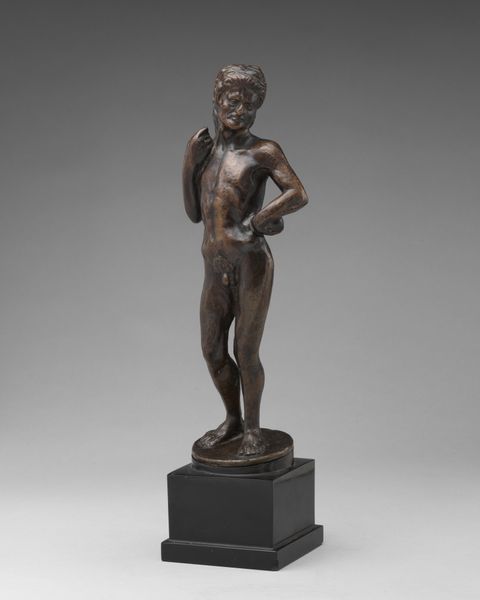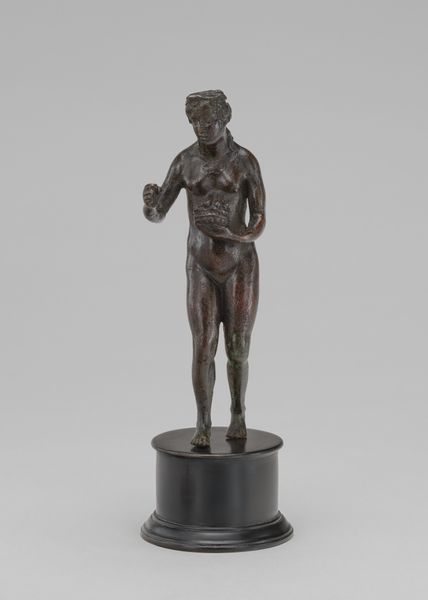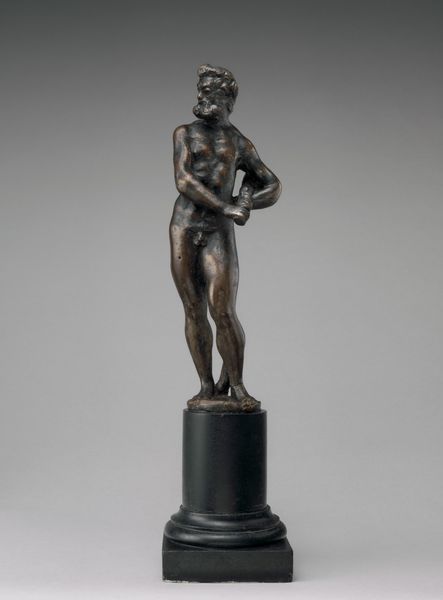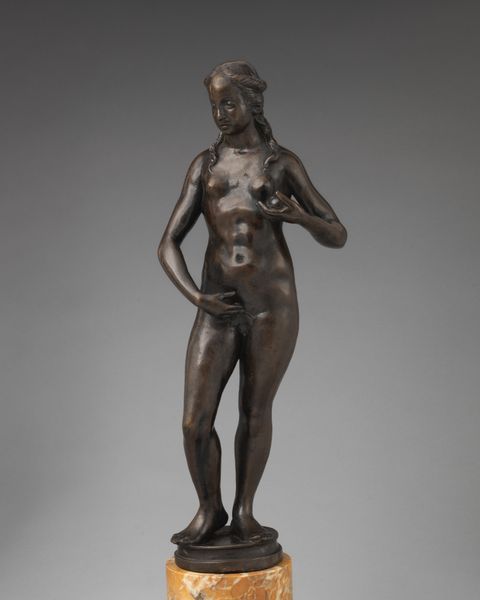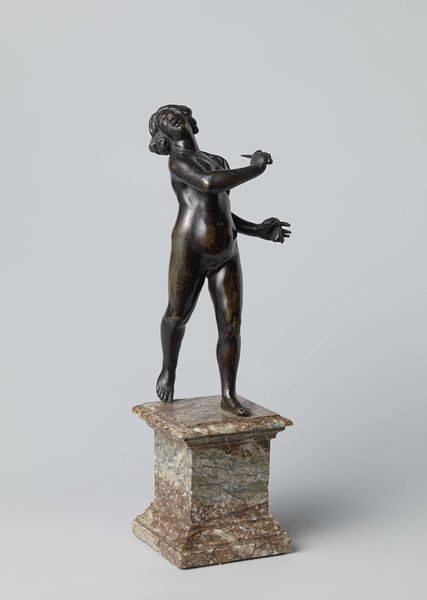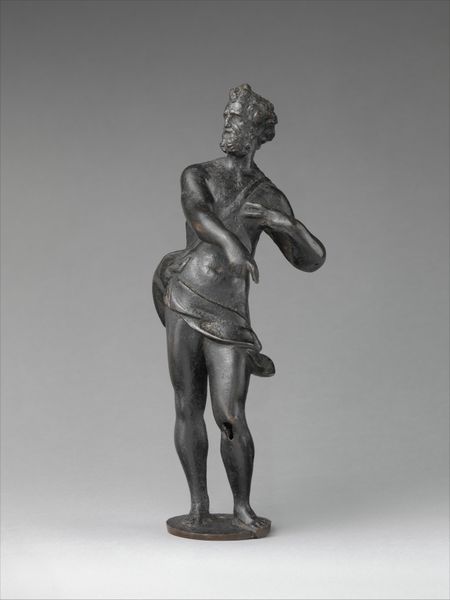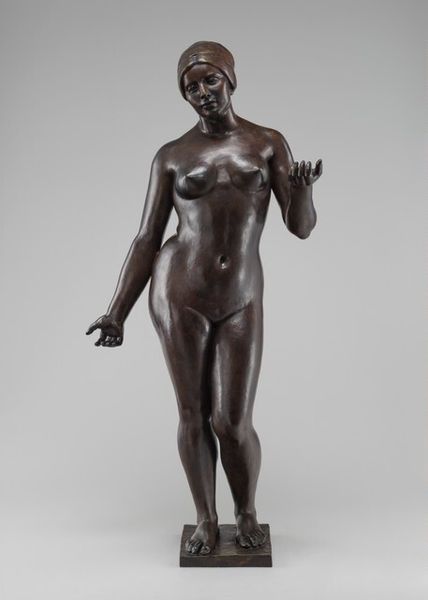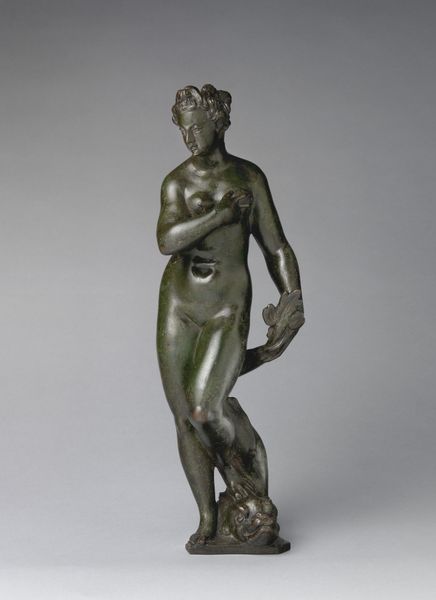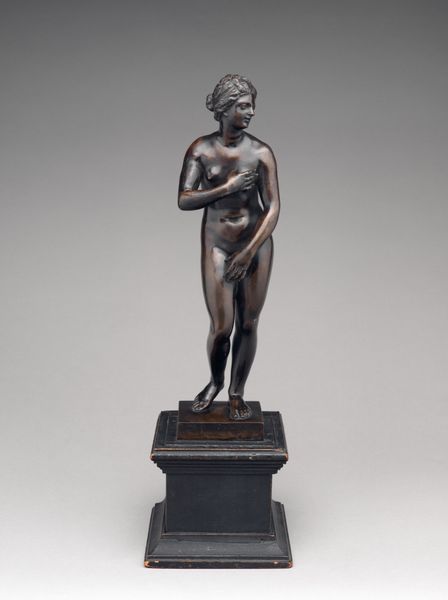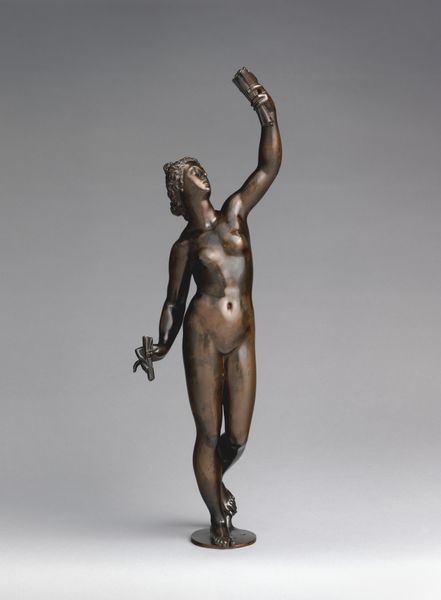
sculpture, wood, ivory
#
portrait
#
figuration
#
11_renaissance
#
female-nude
#
sculpture
#
wood
#
northern-renaissance
#
decorative-art
#
nude
#
ivory
Dimensions: Overall (statuette): 8 3/8 × 3 × 2 1/2 in. (21.3 × 7.6 × 6.4 cm); Overall (pedestal): 2 1/2 × 3 1/8 × 3 in. (6.4 × 7.9 × 7.6 cm)
Copyright: Public Domain
Conrad Meit of Worms carved this boxwood statuette of Lucretia in the early 16th century. The figure of Lucretia, the Roman noblewoman who committed suicide after being raped, embodies the virtue of chastity. Her averted gaze and the subtle tension in her posture hint at the psychological torment within. Consider how this posture echoes in depictions of other tragic heroines throughout art history, such as Ophelia. The averted gaze isn’t simply about modesty, but rather reflects the inner turmoil experienced as she struggles with the burden of her experience. This gesture resonates across cultures, signifying shame, contemplation, or the weight of unspoken trauma. Lucretia's story, like many ancient myths, continues to resurface, evolving into various forms across different eras, each reflecting the changing values and societal concerns surrounding gender, honor, and power.
Comments
No comments
Be the first to comment and join the conversation on the ultimate creative platform.
